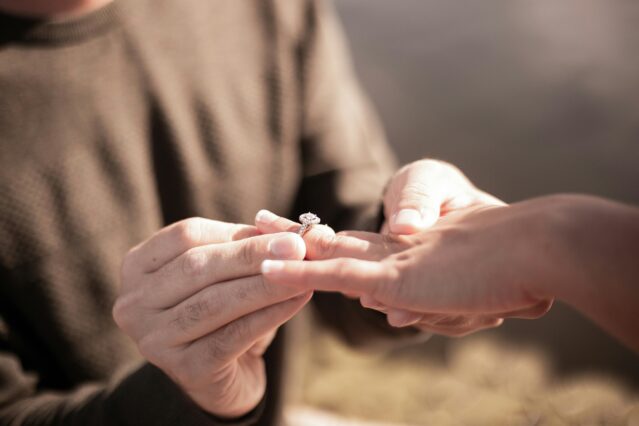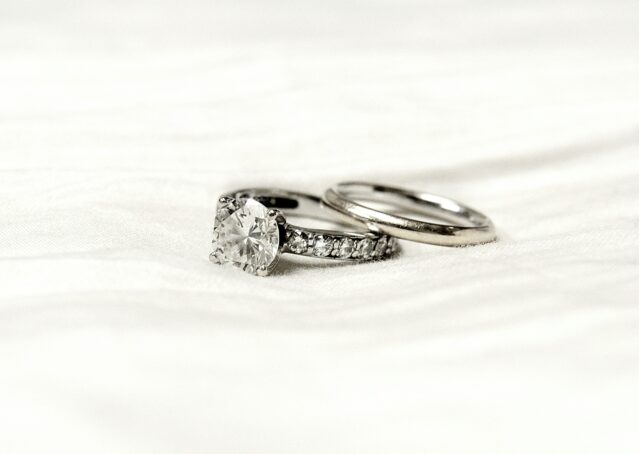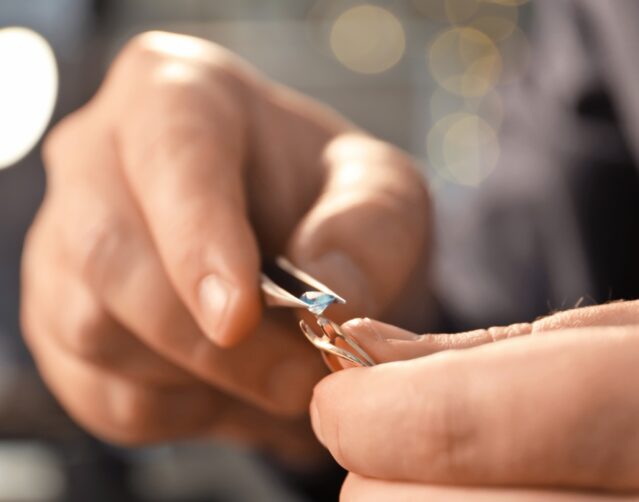27 February
Diamond Buying Guide
When it comes to buying that special diamond, there are lots of options to choose from and it can feel quite overwhelming. We know purchasing a diamond is an investment and we’re here to help you find the perfect fit.
There is a common misconception that the bigger the better, but this isn’t always the case. A diamond’s value is determined by four factors, commonly known as the 4 C’s, carat, colour, cut and clarity. To the naked eye two diamonds could look the same, but they can differ in value depending on the 4 C’s. Before buying your diamond, it’s important to get to know these four factors in more detail.
The 4 C’s
Carat
Did you know, the term carat derives from the carob tree. Before scales and units of mass were invented, the weight of a diamond was compared to the seeds of a Carob tree. Simply put, carat is the weight of a diamond. This is not to be confused with the size, as the cut and shape can alter the carat weight. Although most people think the size of the diamond is the most important factor, this doesn’t necessarily equate to the value. The overall brilliance and cut carry more importance in terms of a diamond’s value.
Colour
You might be surprised to know that diamonds naturally vary in colour. Some diamonds appear to have a slight yellow hue, whilst others are truly colourless. The colour of a diamond actually refers to the lack of colour. Truly colourless diamonds are considered to be the highest quality with the highest value and are very sought after. Meanwhile, diamonds with a yellow tint have a lower value and are ranked lower on the diamond colour classification scale. Of course, this is a very important thing to bear in mind as the colour can dictate the overall look. The below chart shows the different colour gradings.

Cut
Contrary to popular belief, the cut isn’t the final ‘shape’ of the diamond per say, but the quality of angles, proportions and facets. Turning a literal diamond in the rough into a dazzling piece of jewellery. But how do you know if it’s a good diamond? A well cut diamond will make use of the light, symmetry, proportion and finish. Perfectly symmetrical with aligned facets is the creme de la creme of diamonds and will definitely catch your eye. There are so many different options for the cut of your diamond and there’s no right or wrong choice, it’s simply down to personal preference!
Clarity
Clarity refers to how clean the diamond is. Diamonds are naturally created from extreme heat and pressure deep within the earth billions of years ago. Due to this organic process, diamonds can contain internal features such as traces of minerals and uncrystallised carbon, known as inclusions. When considering clarity, it’s important to keep an eye out for these inclusions as they can influence the way light is reflected and refracted. The fewer inclusions, the higher the value of the diamond.
Lab Grown Diamonds
If you’re not concerned about purchasing a natural diamond, lab grown may be the way to go. Lab grown diamonds are manufactured under the same circumstances as natural diamonds but in a laboratory setting. They share the same physical and chemical properties as natural diamonds and even come with their own certifications. So, what’s the difference? The main difference is price; lab grown diamonds are much more cost effective, but of course they are man-made rather than mined naturally from the Earth.
Purchasing a diamond is a very unique and personal experience. Everyone will have different requirements, but a good jeweller will be able to advise the best diamond for your budget. At Aleks Jewellers, our expert customer service staff are always on hand to help with any questions you may have. Why not visit us at our local Norwich store or get in touch by calling 01603 623754 or email [email protected].



